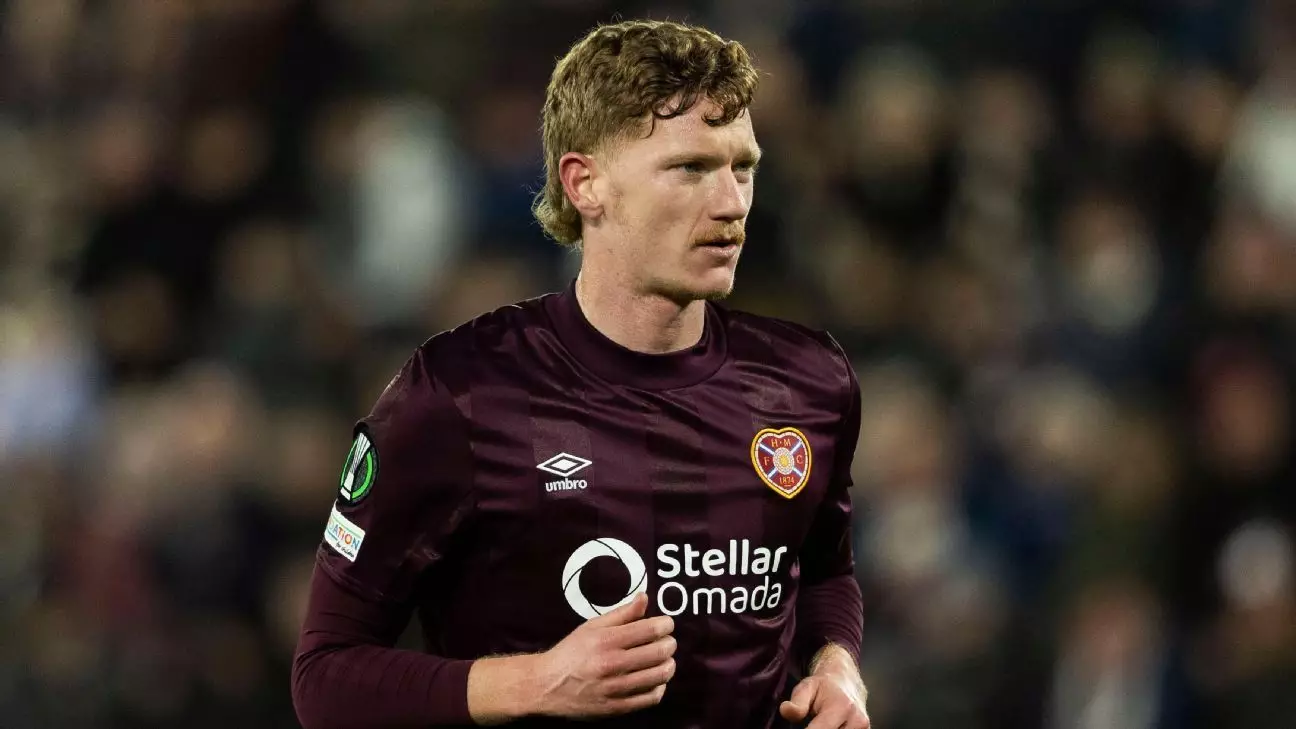Australian football has seen a significant shift in its landscape, largely influenced by the rise of Major League Soccer (MLS) in the United States. The recent move of Kye Rowles, a 26-year-old central defender, from Scottish club Hearts to D.C. United, not only marks a personal milestone for Rowles but also reflects a larger trend that head coach Tony Popovic is keen to highlight. As the national team, the Socceroos, prepares for crucial World Cup qualifiers, the adaptability and international experience brought by players joining MLS could prove invaluable.
The migration of Australian talent into MLS has been increasing steadily, a fact underscored by Rowles’ recent signing. With a two-year contract that includes an option for an additional season, Rowles is stepping into a league recognized for its growth and professional standards. Joining him are fellow Socceroos such as Patrick Yazbek (Nashville SC), along with up-and-coming under-23 internationals like Jake Girdwood-Reich, Lachlan Brook, and Giuseppe Bovalina. This influx of players underscores a vital connection between Australian football and the increasingly competitive environment of MLS.
Popovic emphasizes that MLS serves as a “good stepping stone” for Australian players looking to elevate their careers. There is a palpable excitement about the opportunities that await these players in America, where the resources available, from stadiums to training facilities, are robust. “There’s a lot invested in that league,” Popovic stated, capturing the essence of why these moves are beneficial for players at this stage in their careers.
The financial aspect of these transfers cannot be ignored. Rowles’ move reportedly netted Hearts around £600,000, while Girdwood-Reich’s transfer marks a record fee for Sydney FC. This trend indicates an escalating recognition of the value Australian players possess in the global market. Furthermore, Macarthur FC’s Ariath Piol is expected to join Real Salt Lake for a fee exceeding US$500,000, highlighting a willingness among MLS clubs to invest in Australian talent actively.
This financial investment extends beyond mere transfers; it reinforces the idea that Australian footballers are increasingly seen as valuable assets. As Popovic noted, the influx of resources, growing fan engagement, and professional support personnel in MLS stands to benefit players—paving their paths not just to the U.S. league but potentially to larger European clubs as well.
As the Socceroos face critical World Cup qualifiers in March, the defensive lineup is facing challenges that underscore the importance of players like Rowles finding their footing quickly in MLS. The recent Achilles tendon injury to Harry Souttar leaves a significant hole in the squad, revealing the precarious state of the Australian defense. With Lui Circati also absent due to an ACL injury, the Socceroos must lean on their remaining defenders.
The search for a player to fill Souttar’s role is paramount, as his unique attributes aren’t easily replaceable. While Popovic is open to exploring various options, the potential for players like Cam Burgess to step into this pivotal role speaks to the dynamically shifting landscape of Australian football. The ability of various players to adapt and fill such roles could either make or break Australia’s efforts on the international stage.
Every challenge carries with it opportunities for growth. For Rowles and his compatriots, the transition to MLS serves a dual purpose: it offers them a platform to hone their skills in a competitive environment while simultaneously preparing them for future international commitments. Popovic’s remarks on the professional caliber of MLS suggest that the experience gained there is beneficial not just for individual players but also bolsters the national squad when these players return for duty.
Additionally, Mathew Ryan’s situation illustrates the importance of securing regular playing time. His potential move to Ligue 1 side Lens could provide him with the minutes he needs to maintain his form, ensuring he’s ready when called upon for national responsibilities. This focus on active participation in competitive leagues stands as a testimony to the proactive approach for Socceroos players in refining their skills and contributing to the team’s depth.
The intersection of Australian football and MLS is forging a new narrative for players and enthusiasts alike. With leaders like Tony Popovic recognizing the significance of these developments, Australian football is on a trajectory that could yield lasting benefits both locally and abroad. As new talents emerge and current ones navigate this ever-changing landscape, the Socceroos are certainly poised for a promising future, reflective of a footballing system that continually seeks to adapt and thrive in a globalized sport.

